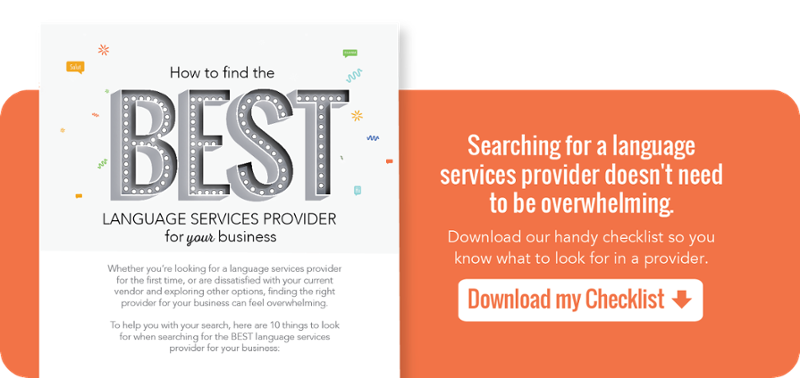Stay up to date.
Stay connected with tips, resources & stories on language access.
When you’re on the hunt for a new services provider, price crops up almost instantly. And that makes perfect sense – affordability has to be one of your primary concerns. But it can’t be your only concern.
There are two kinds of “affordable” options out there: affordable services with long-term value, and affordable services that are just, well, “affordable.” And discerning the difference (ahead of time) is crucial.
When it comes to language services, many people go the “cost-per” route – cost-per-minute for telephone interpreting and cost-per-word or hour for project-based work like translation and transcreation. They’re looking for affordability, but they’re using a pretty short-sighted strategy.
You need to look deeper. You’ve got to hone in on sustainable value to make “affordable services” work for you – which means the relationship between you and your provider sustains you for the long run. Focus on value to find an affordable language services provider who will meet your needs as your needs change and provide you with value as your sense of value evolves.
If the only factor you examine is cost-per-minute, you might be signing yourself up for subpar services. Here’s an example: Poor telephone interpreting often leads to longer Average Handle Time (AHT). Average Handle Time is the duration of a phone call between your customer service rep, the limited-English speaker and the interpreter. So, while you may be paying less “per-minute” than you would with a higher-quality provider, you’ll be eating those savings in the long run with longer calls (resulting in more money spent), frustrated customer service reps and unhappy customers.
It’s imperative to consider connect times and interpretation quality. Lower-quality providers will take longer to connect your calls and, on top of that, offer less-than-qualified telephone interpreters who either don’t understand your industry or don’t have the experience to handle a call seamlessly. (Or both.) This means more time is wasted, customers get agitated and customer service reps slump in productivity.
Aside from monetary loss and agitation, low quality interpretation and long connect times also lead to poor customer satisfaction (CSAT) and employee satisfaction scores. And that sets you up for low loyalty and high turnover.
To avoid low-quality, high-risk situations you need to set your sights on a language services provider who offers long-term value, not just the lowest rate.
If you’re after value, look for these power plays in a provider:
If you’re only searching for affordability, you’re likely to run into the following red flags.
On paper and without any real probing, the language services provider offering the lowest per-minute cost may seem like the best option. But the hidden costs of inefficiency, bad service and angry customers are going to lurk under those “great” prices. And they're going to surface... with a vengeance.
“Affordable services” without the value component immediately translate into the very things you’re trying to avoid: high costs, low efficiency and frustrated customers.
But don’t compromise the value. Here's what you should be looking for in a language services provider: